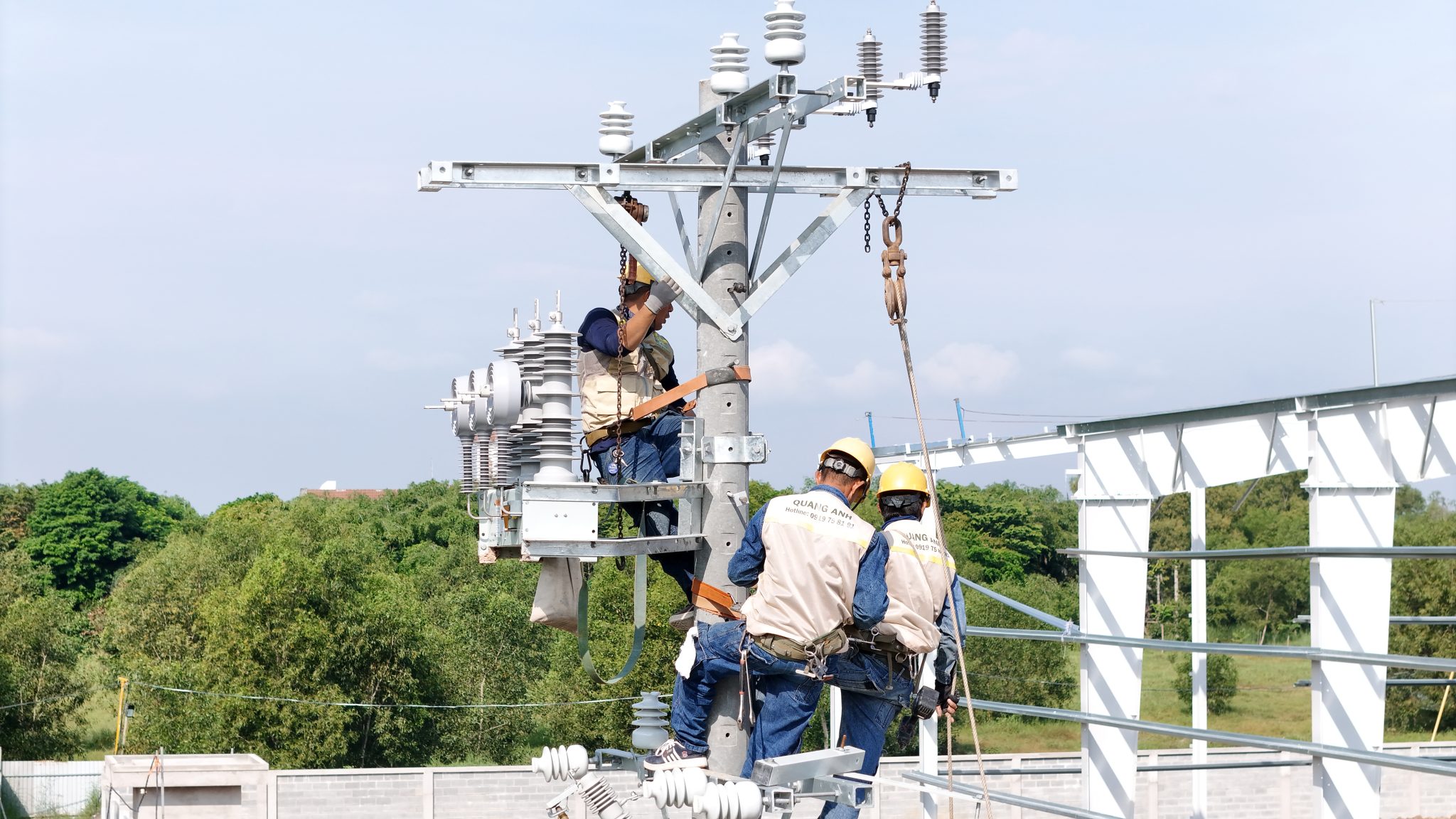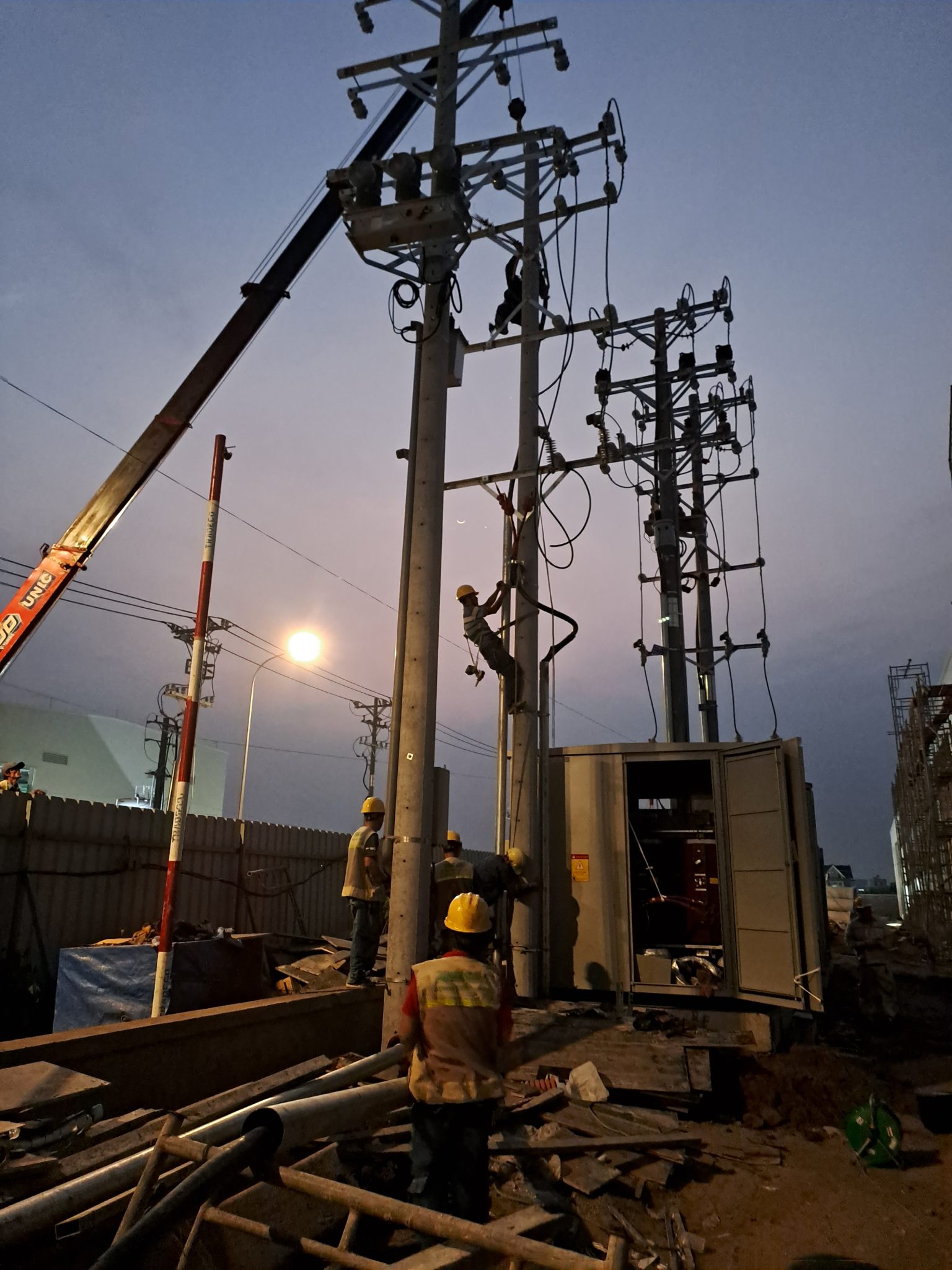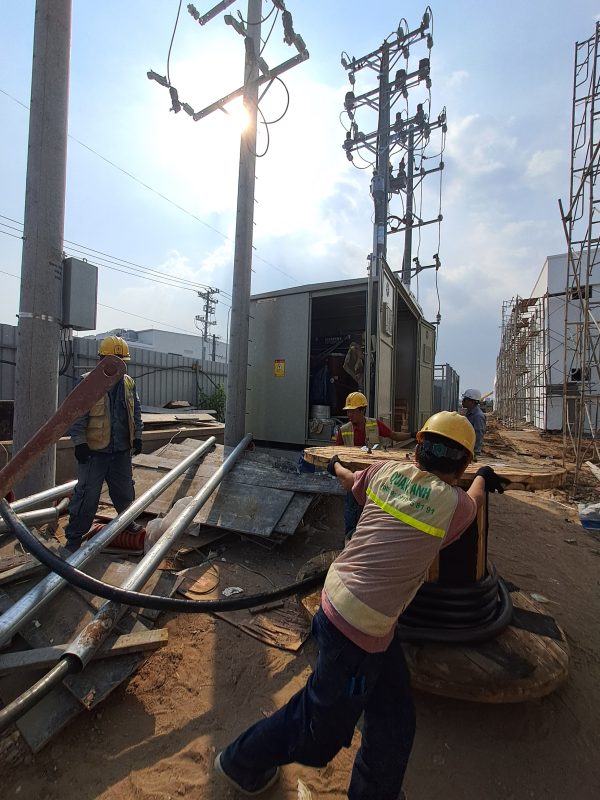The construction industry in Vietnam plays a crucial role in the economy, closely interacting with social fields and making significant contributions to national development.
Sector Segmentation and Construction Activities in Vietnam
Construction projects focus on housing and non-residential infrastructure, especially due to the rising demand for affordable housing. Additionally, building materials have rapidly expanded, with significant production value, taking up a large share of Vietnam’s GDP. This progress propels the construction industry as a vital economic driver.
Vietnam’s construction sector is entering a robust development phase, particularly with the rise of bridge and road construction activities, residential building, and infrastructure development.
Construction Sector Segmentation
The construction industry in Vietnam is divided into three main segments:
-
Bridge and Road Construction: Involves various activities from formwork and concrete pumping to earth excavation, steel fixing, and scaffolding. It’s a foundation for developing transportation infrastructure that supports economic growth.
-
Residential Construction: Entails tasks such as plastering, roofing, earthworks, interior finishing, and insulation spraying. This segment primarily addresses residential projects, which are receiving significant investment due to rising housing demands in urban and developing areas.
-
Utility Installation: Focuses on installing systems like telecommunications lines, pipelines, and insulation, enhancing the efficiency and sustainability of construction operations.
Construction Activities
Construction activities in Vietnam are bolstered by the development of crucial infrastructure projects, including housing and transportation. Significant public and private investment propels the construction industry as an economic growth engine with a stable growth outlook.
Development Trends
In 2024, the construction industry is expected to experience significant growth with an anticipated 7.5% increase. Construction projects promise to transform urban spaces and meet market demands. The period from 2025 to 2028 also expects an average annual growth rate of 6.7%. Regions like the Red River Delta and Southeast have been driving remarkable breakthroughs due to robust infrastructure development.

Growth Landscape of the Construction Industry
The construction industry is projected to grow by approximately 7.5% in 2024, driven by investments in transportation, housing, and energy. Growth forecasts from 2025 to 2028 illustrate an average annual increase of about 6.7%. These figures demonstrate that construction is a pivotal sector for economic development.
Stepping into a new growth phase from 2025, Vietnam’s construction sector benefits from a multitude of positive factors. This not only fuels Vietnam’s economy but also encourages robust construction investment opportunities.
Growth Drivers
- Favorable Economic Environment: 2025 is anticipated to see Vietnam’s economy grow over 8%, offering a positive boost to the construction market.
- Legislative Reform: Amendments to key laws like the Land Law, Housing Law, and Real Estate Business Law promise to resolve long-standing issues, thereby spurring demand and construction activities.
- Flexible Investment Mechanisms: Resolution number 171/2024/QH15 relaxes the effective use of zoned lands, paving the way for new waves of investment in the sector.
Growth Rate
- Growth Projections: The construction industry is expected to achieve a growth rate between 10.7% and 15% in 2025.
- Growth Basis: From 2013 to 2023, the industry consistently maintained impressive growth with a CAGR of 11%, driven by strong industrialization and urbanization processes.
Growth Segments
- Infrastructure Construction: Large-scale infrastructure projects are underway, playing a leading role in the industry’s growth.
- Industrial and Residential Construction: These two segments continue to grow from the latter half of 2024 through 2025, yielding strong financial outcomes for businesses.
Challenges and Opportunities
- Challenges: Small enterprises struggle with capital recovery and face intense bidding competition due to the impact of previous market phases.
- Opportunities: The year 2025 is seen as a golden opportunity for domestic firms to rise strongly, taking full advantage of favorable conditions and new policy support.

Trends and Challenges in the Construction Sector
The construction sector is experiencing rapid growth trends in transportation, renewable energy, and residential construction. However, the biggest challenge is enhancing linkages and cooperation in the industry’s value chain to boost competitiveness and leverage the market’s vast potential.
Confronted by significant trends and challenges, especially amid the robust development of green industrial zones, the Vietnam Construction Industry aims towards 2025-2030, prioritizing eco-friendly zones with increasingly stringent building standards. This marks a substantial opportunity as businesses invest in new technologies and workforce to ensure sustainable development.
A key highlight is public investment, expected to surge in 2025. Supported robustly by legal elements and improved material supplies, this could accelerate sector growth. The industry is preparing for crucial infrastructure projects, targeting a growth range from 10.7% to 15% in 2025.
Nonetheless, the industry faces significant challenges regarding materials. The shortage of supplies, especially in the southern area, poses considerable obstacles for many projects. This necessitates quick adaptation in supply chain management.
Moreover, stringent construction regulations put greater responsibility on businesses to address project management needs and ensure project quality. These are vital for stability and growth amid current market dynamics.
Finally, green industrial development is not just a trend but a long-term strategy for creating differentiation and enhancing market competitiveness in the construction sector.

The construction industry in Vietnam not only greatly contributes to GDP but also holds a strategic role in urban and industrial development. With strong human resources, the industry’s growth potential is significant.
For more details on how to join and invest in the construction sector, contact QuangAnhcons at hotline: +84 9 1975 8191.
QuangAnhcons offers comprehensive construction management services, from consulting and design to execution, ensuring quality and timeliness for all projects.


Related Posts
Factory Electrical Systems: Comprehensive Design and Implementation Guide
Discover the detailed and safe process of factory electrical systems design and implementation. [...]
Oct
Blueprints Required for Factory Construction Permits
Discover the necessary blueprints in factory construction permit applications, from floor plans to electrical and [...]
Oct
What Are the Requirements for a Factory Construction Permit? A Comprehensive Guide
Explore the documentation and steps needed to secure a factory construction permit for streamlined project [...]
Oct
Factory Construction Permit Procedures in Vietnam: Essential Guidelines and Documents
Learn the procedures for securing a factory construction permit in Vietnam, focusing on document preparation [...]
Oct
Key Steps in the Factory Construction Process
Discover the essential steps and requirements for building factories. [...]
Oct
Comprehensive Electrical Substation Solutions by Quanganhcons
Discover the cutting-edge electrical substation solutions offered by Quanganhcons for industrial applications. [...]
Oct
Investment Costs for a 1MWp Solar Power System and Influencing Factors
Explore the investment costs for a 1MWp solar power system in Vietnam and the influencing [...]
Sep
QuangAnhcons: Elevating Wind Energy Solutions
Explore QuangAnhcons' leadership in wind energy and renewable solutions in Vietnam. [...]
Sep
Electrical Contractor Strategies at Becamex Industrial Park
Discover the strategic advancements and partnerships of the electrical contractor at Becamex Industrial Park. [...]
Sep
Investment Insights for 1MW Wind Energy in Vietnam: Costs and Opportunities
Discover the detailed analysis of costs and opportunities for investing in 1MW wind energy projects [...]
Sep
Advanced Electrical Installation Solutions by QuangAnhcons
Explore advanced electrical installation solutions and modern technology with QuangAnhcons. [...]
Sep
Enhancing Industrial Electrical Services with Quanganhcons
Discover Quanganhcons' expertise in industrial electrical services, offering efficient and sustainable power systems. [...]
Sep
Comprehensive MEP Solutions by QuangAnhcons: From Design to Maintenance Excellence
Discover optimal MEP solutions with QuangAnhcons, dedicated to excellence from design through maintenance. [...]
Sep
Comprehensive Electromechanical Contracting Solutions by QuangAnhcons
Explore QuangAnhcons' comprehensive services for efficient and safe energy system solutions. [...]
Sep
QuangAnhcons: Empowering Industrial Energy Solutions
Discover how QuangAnhcons delivers optimal industrial EPC solutions. [...]
Sep
Effective Industrial Construction Management and Execution
Optimize your industrial projects from design to execution with our contractor services. [...]
Sep
QuangAnhcons: Pioneers in M&E and Renewable Energy Solutions
Discover QuangAnhcons' innovative M&E services and renewable energy solutions. [...]
Sep
QuangAnhcons: Expertise and Outstanding Services in the Electrical Sector
Discover the unmatched expertise and services of QuangAnhcons, setting superior standards in the electrical contracting [...]
Sep
QuangAnhcons: Innovation and Precision in Industrial Electrical Contracting
Discover QuangAnhcons, a top contractor offering superior electro-mechanical solutions. [...]
Aug
Expert Solutions for 2x2500kVA Substation Projects with QuangAnhCons
Explore QuangAnhCons, a forefront entity in designing and constructing large industrial substations. [...]
Aug